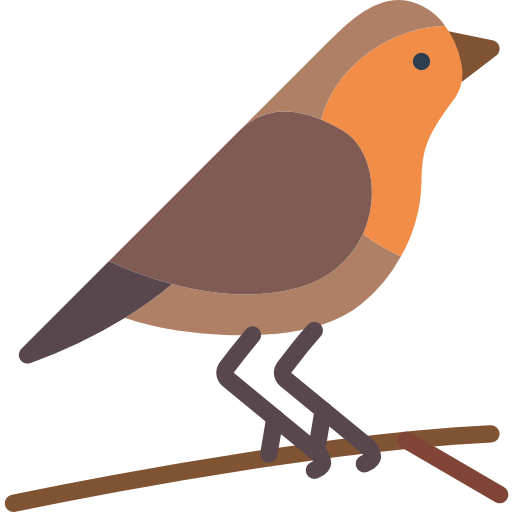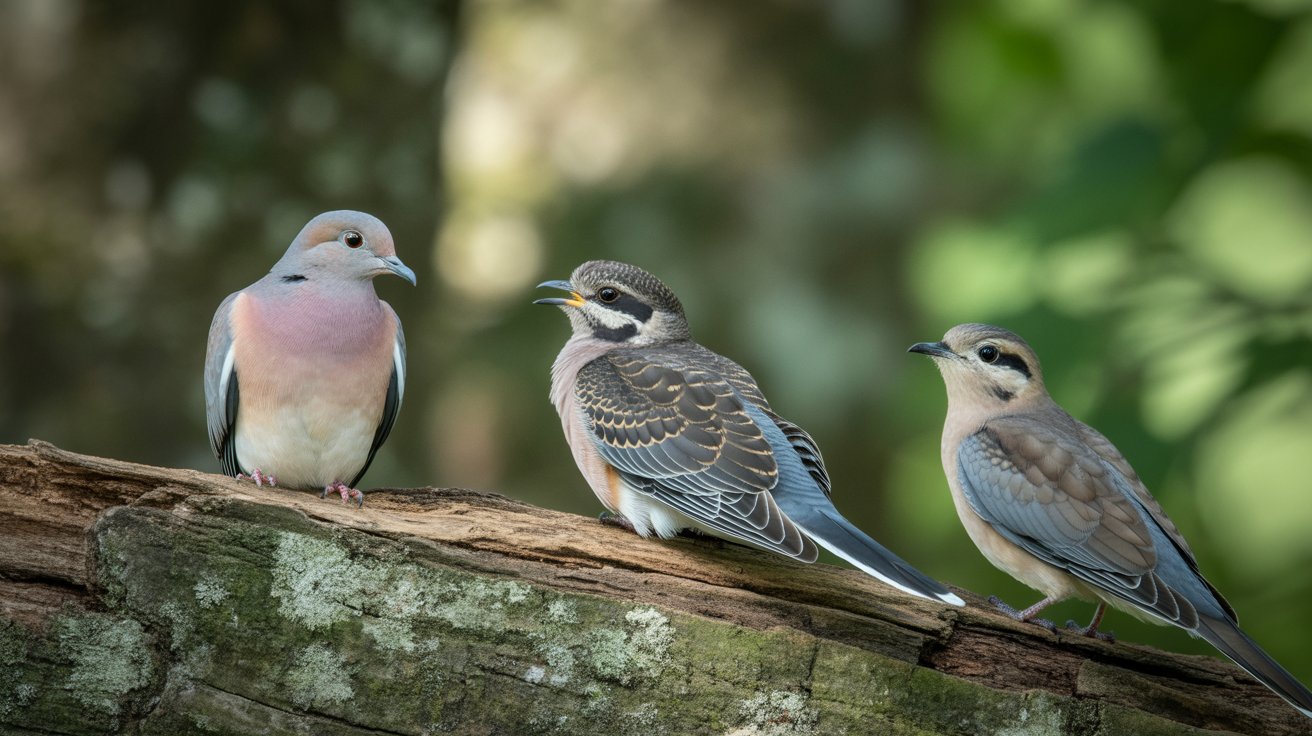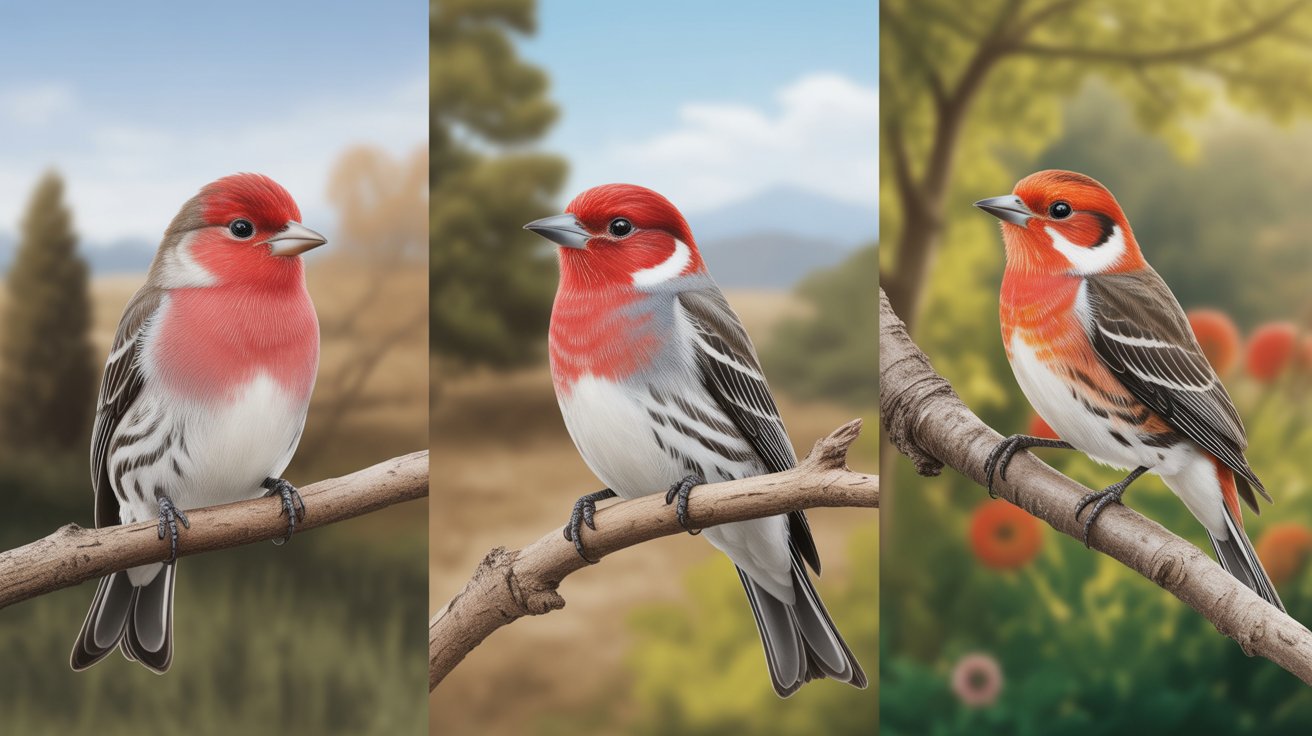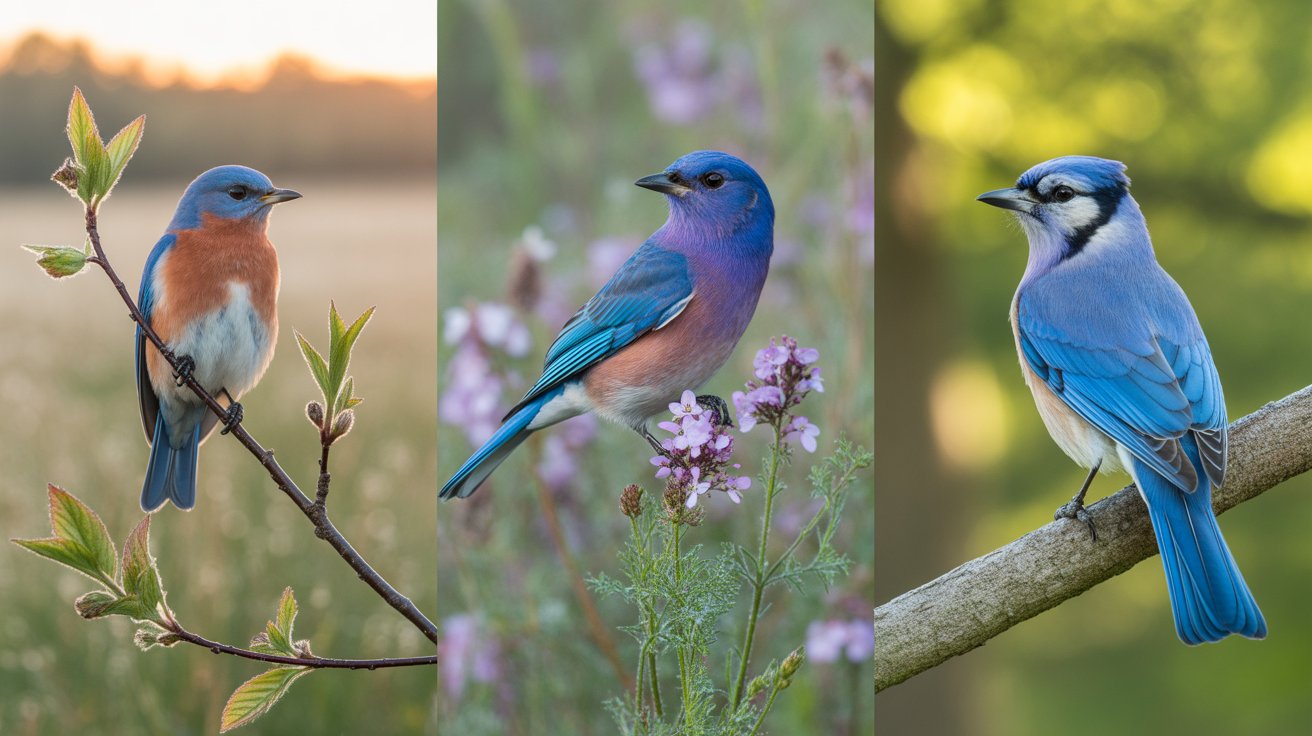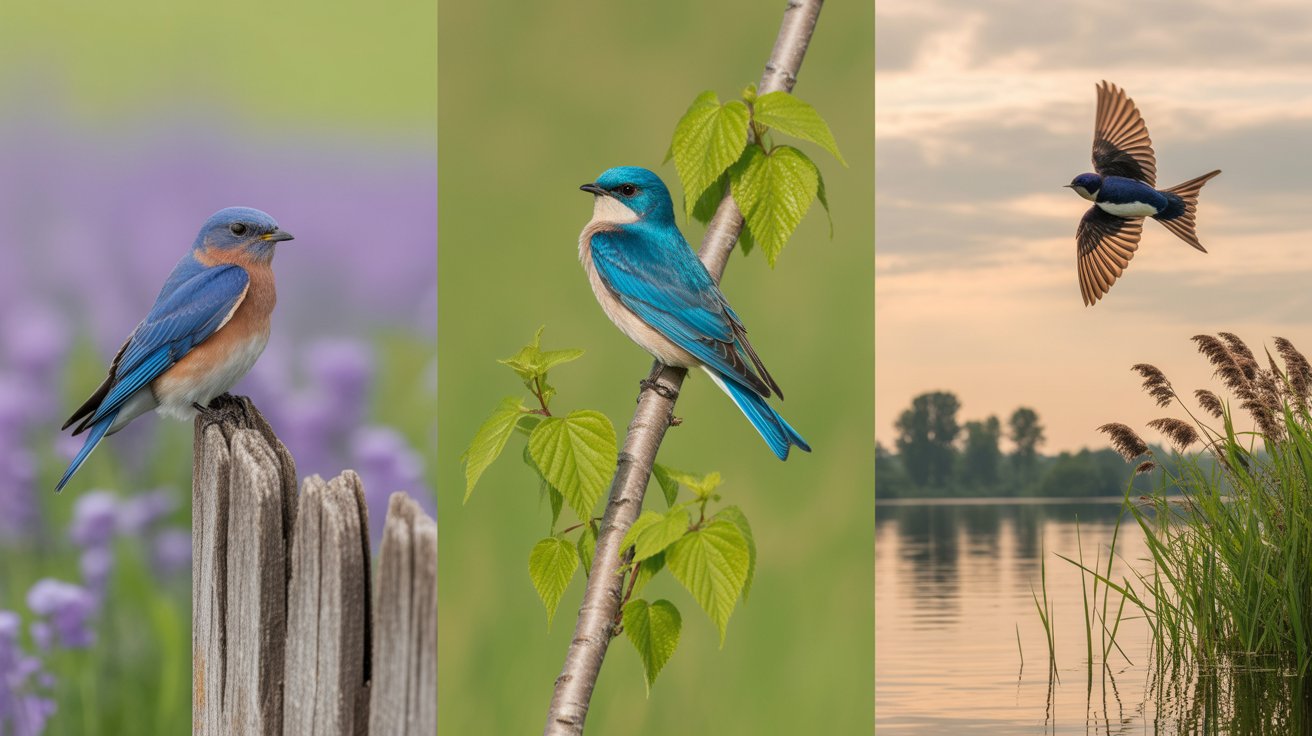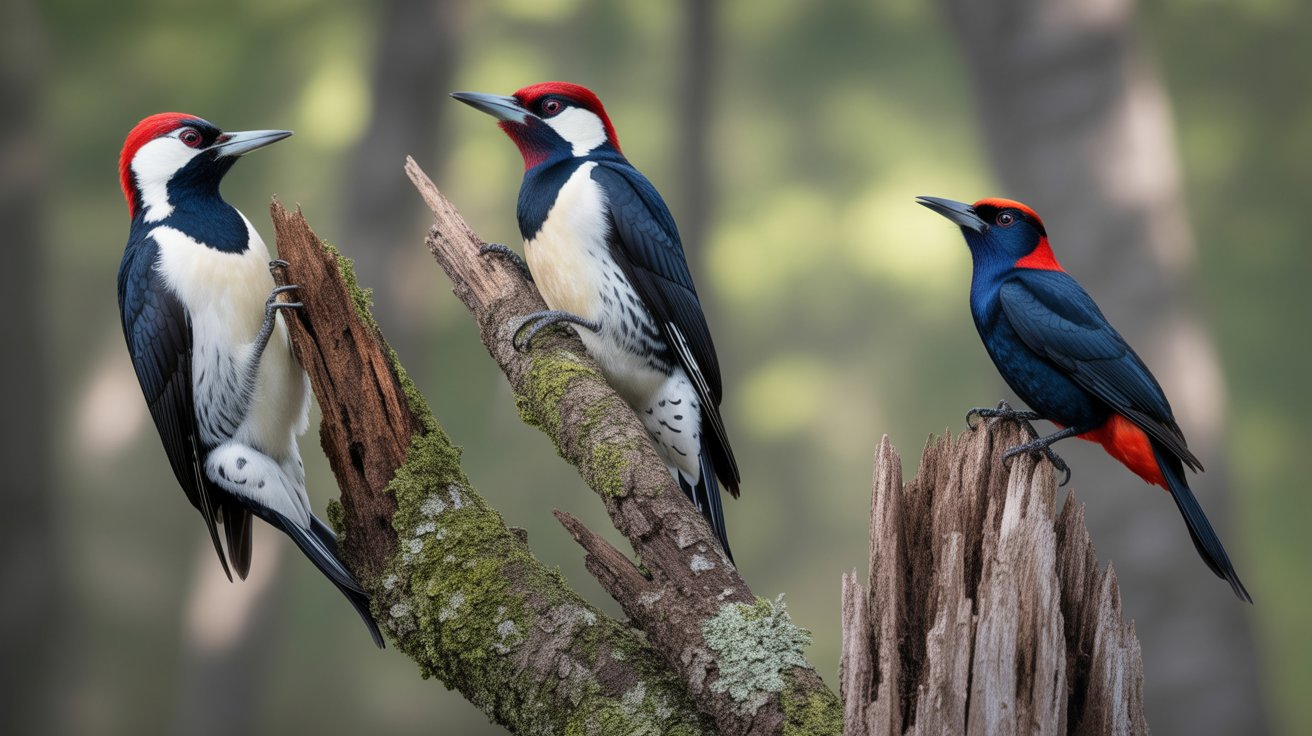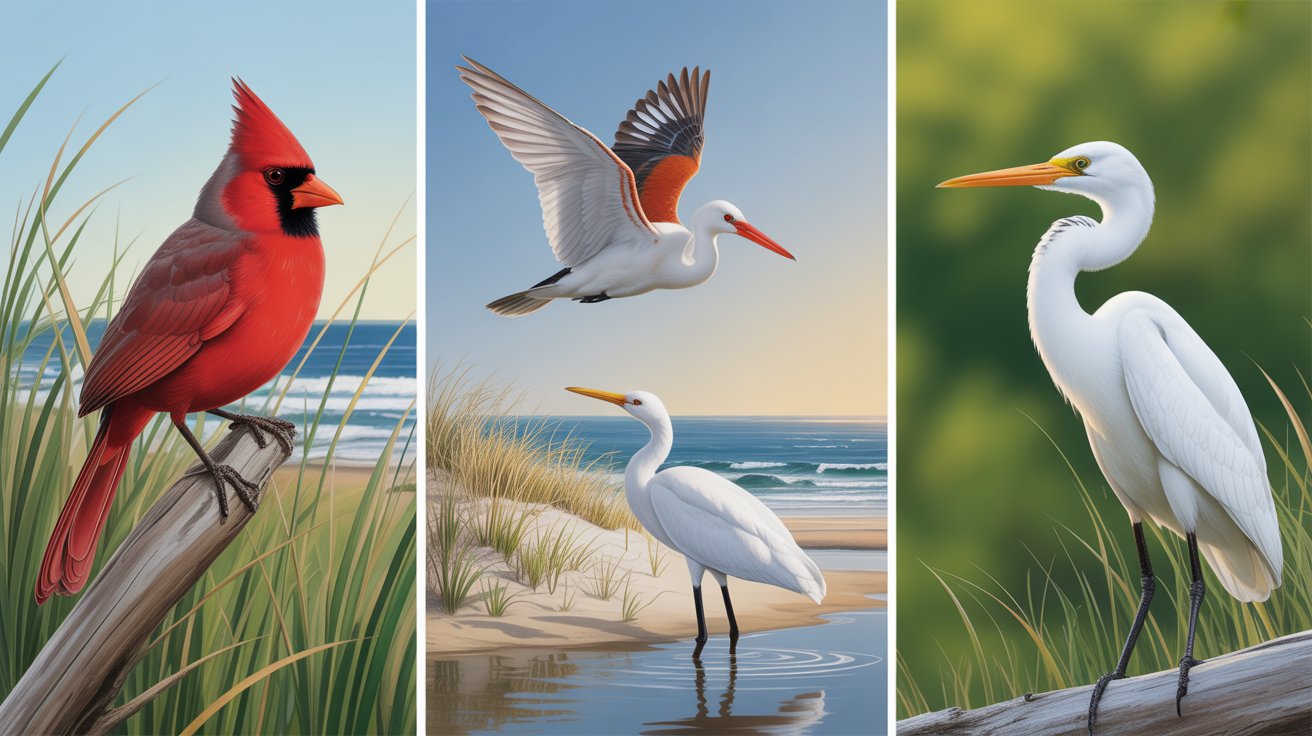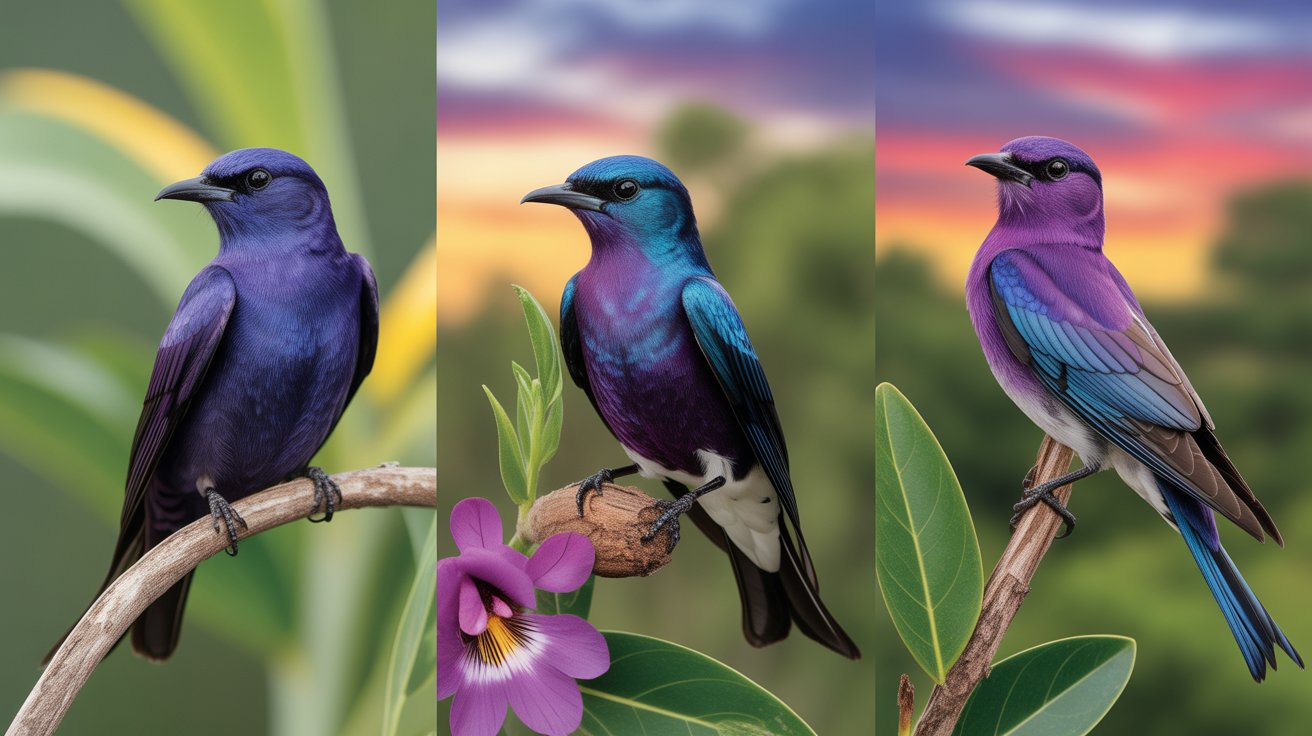When you spot a sleek black bird with a vibrant orange beak, it’s hard not to pause and wonder about its story.
You might think, “Which species is that?” or “What makes its beak so brilliantly colored?” You’re not alone—bird lovers worldwide are captivated by these striking combinations.
In this article, you’ll discover twenty‑five fascinating black birds, each with its own unique orange‑beaked charm.
From common garden visitors to exotic seabirds, every entry brings something special to the table.
You’re about to take a journey across continents and climates—exploring birds that thrive in forests, wetlands, rocky shores, and even your backyard.
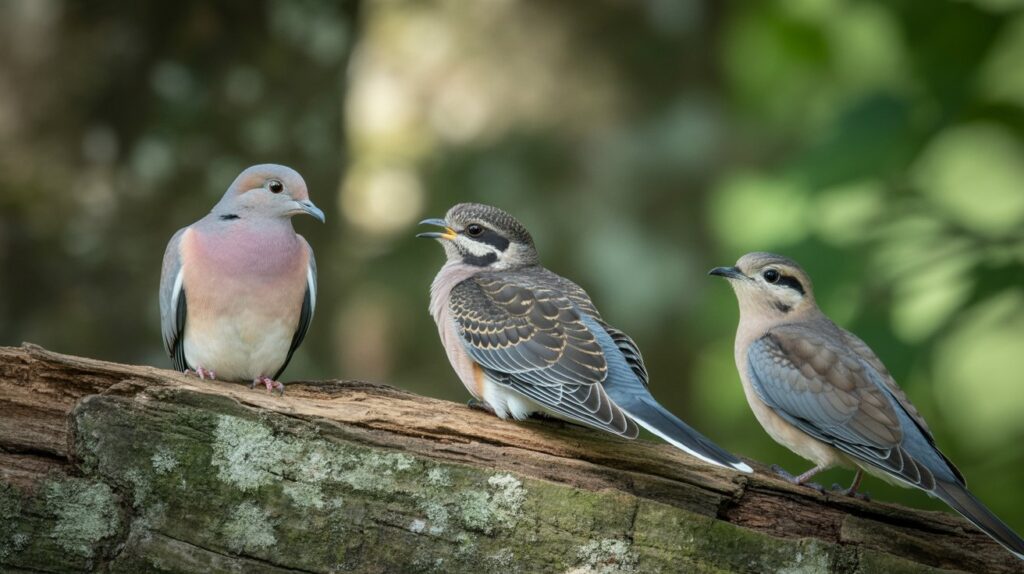
Each profile offers vivid, descriptive imagery, so you feel like you’re observing the bird in person.
You’ll also find scientific names, wingspans, lengths, weights, and some fun behavior facts—all laid out clearly in bullet lists for quick skimming.
By the end of this guide, you’ll not only recognize these species by sight but also appreciate the evolutionary quirks behind their bold beak colors.
It’s an enjoyable, well‑researched, and SEO‑ready adventure—perfect for curious birdwatchers, wildlife bloggers, or anyone who cherishes nature’s artistry. Let’s get started on this colorful flight!
Contents
- 25 Black Birds With Orange Beaks
- 1. Common Blackbird
- 2. Indian Blackbird
- 3. Black Oystercatcher
- 4. Crested Auklet
- 5. African Skimmer
- 6. American Oystercatcher
- 7. Red-winged Blackbird (Males)
- 8. Hill Myna
- 9. Yellow-faced Myna
- 10. Common Hill Myna
- 11. Black Bulbul
- 12. Bank Myna
- 13. Alpine Chough
- 14. Tricolored Blackbird
- 15. Jungle Myna
- 16. Red-billed Chough
- 17. Pale-billed Flowerpecker
- 18. Spot-winged Starling
- 19. Golden-crested Myna
- 20. White-vented Myna
- 21. Sri Lanka Hill Myna
- 22. Bearded Barbet
- 23. Blyth’s Starling
- 24. Black-and-orange Flycatcher
- 25. Yellow-billed Chough (young)
- Frequently Asked Questions (FAQs)
- Conclusion
25 Black Birds With Orange Beaks
1. Common Blackbird
Scientific name: Turdus merula
From gardens in Europe to suburban parks worldwide, the Common Blackbird is instantly recognizable.
The male shines in glossy coal‑black plumage crowned by a rich orange‑yellow beak and eye‑ring. This bold contrast makes it a beloved subject for backyard birders. You’ll often hear its melodic, mellow song echoing through the morning air.
- Wingspan: 34–38 cm
- Length: 23.5–29 cm
- Weight: 80–125 g
- Beak: Orange-yellow, darkens in winter
When you see one perched proudly on a fence or foraging in a lawn, remember the beak doesn’t just look good—it’s a tool, shaped precisely for probing soil and snatching worms. Juveniles and females have more muted brown plumage and less vibrant beaks, but males stand out year‑round. These birds raise up to three broods in woodland and urban settings, showcasing adaptability and charm.
2. Indian Blackbird
Scientific name: Turdus simillimus
In parts of South Asia, particularly in India, the Indian Blackbird makes quite the impression. This regional cousin of the common blackbird displays deep, sooty-black feathers coupled with a striking orange beak. Though similar in silhouette, the species adapts distinctly to its warmer habitat.
- Wingspan: ~35 cm
- Length: 24–26 cm
- Weight: ~95 g
- Beak: Bright orange, slightly curved
The bird favors dense undergrowth and forest edges, where it skillfully hunts insects and berries. You might glimpse one near wooded gardens, rustling through leaves with its sharp beak. Although fewer detailed studies exist compared to its European counterpart, its strong territorial singing—especially from elevated perches—remains a common trait among Turdus thrushes.
3. Black Oystercatcher
Scientific name: Haematopus bachmani
When you explore the rugged shorelines of the North American Pacific coast, the Black Oystercatcher catches your eye immediately. Dressed head-to-toe in matte black, it stands tall on pale pink legs. Yet its most dazzling feature? A vivid, seaweed-orange bill that’s both functional and phenomenal.
- Wingspan: ~60–64 cm
- Length: 42–49 cm
- Weight: ~700–800 g
- Beak: Long, thick, bright orange to red
That bill is built for strength—it’s used to pry open mussels and shellfish clinging to rocks. You’ll see this bird hopping along tidal zones, bill poised for action. Its orange eye‑ring perfectly accents the bill, creating a bold, monochromatic drama against the coastal backdrop.
4. Crested Auklet
Scientific name: Aethia cristatella
The Crested Auklet is a quirky seabird from the North Pacific that will steal your attention with its eccentric looks. Sporting glossy black plumage, this small bird also flaunts a prominent forward-curving feather crest and a short, stout orange bill.
- Wingspan: 34–38 cm
- Length: 18–27 cm
- Weight: 160–300 g
- Beak: Short, stout, and bright orange
These birds nest in large colonies along rocky cliffs and islands. You’ll often find them fluttering in tight flocks, producing a bizarre scent like tangerines, especially during the breeding season—a trait that scientists believe plays a role in mate attraction. Despite their stubby wings, they are excellent swimmers, using their wings to propel themselves underwater in search of plankton and small crustaceans.
5. African Skimmer
Scientific name: Rynchops flavirostris
Sleek, graceful, and distinct, the African Skimmer is a black bird with a bright orange bill, tipped with yellow. What’s remarkable is the bill’s structure—the lower mandible is longer than the upper, helping it “skim” over water for food.
- Wingspan: 100–110 cm
- Length: 38–42 cm
- Weight: 130–150 g
- Beak: Long, flattened, orange with yellow tip
You can find this skimmer gliding just above rivers and lakes in Sub-Saharan Africa. The black upperparts contrast with white underparts, while the vivid beak glows in flight. These birds feed on small fish, using their specialized bills to scoop prey straight from the surface.
6. American Oystercatcher
Scientific name: Haematopus palliatus
Found along the Atlantic and Gulf coasts of North America, the American Oystercatcher is built for shellfish feasting. Its black head and upper chest contrast sharply with white underparts, but it’s the oversized orange-red bill that defines it.
- Wingspan: 71–91 cm
- Length: 40–44 cm
- Weight: 400–700 g
- Beak: Long, straight, bright orange-red
This bird uses its powerful beak to pry open oysters and clams. With yellow eyes encircled by orange-red skin, it has a fiery look to match its bold personality. Often seen walking across sandy beaches, it calls with a sharp “wheep wheep” as it patrols coastal feeding grounds.
7. Red-winged Blackbird (Males)
Scientific name: Agelaius phoeniceus
While the Red-winged Blackbird is famous for its red and yellow shoulder patches, the male’s strong orange-yellow beak also deserves attention. These birds are highly territorial and incredibly vocal during mating season.
- Wingspan: 30–40 cm
- Length: 17–23 cm
- Weight: 40–65 g
- Beak: Pointed, orange-yellow to grayish in some individuals
Often found in wetlands, meadows, and marshes, these blackbirds create a spectacle as they sing from cattails and rushes. Females look entirely different, with brownish streaked plumage.
8. Hill Myna
Scientific name: Gracula religiosa
The Hill Myna is not only striking for its blackish-purple gloss but also for its loud, clear calls and vibrant beak. You’ll find it in India and Southeast Asia, and it’s popular as a pet because of its impressive mimicry.
- Wingspan: ~60 cm
- Length: 25–30 cm
- Weight: 140–190 g
- Beak: Bright orange with a yellow base
What sets this bird apart are the fleshy yellow wattles on the head and its intelligent demeanor. It’s often seen in pairs or small flocks, foraging in tropical forest canopies for fruits and insects.
9. Yellow-faced Myna
Scientific name: Mino dumontii
A tropical gem from New Guinea, the Yellow-faced Myna is a large, shiny black bird with a shocking yellow face patch and a deep orange beak. It’s gregarious, noisy, and eye-catching in every sense.
- Wingspan: ~50 cm
- Length: 26–28 cm
- Weight: ~250 g
- Beak: Deep orange, slightly curved
This myna thrives in forest canopies and is often seen in pairs or small groups. Its vibrant face and loud calls make it impossible to miss.
10. Common Hill Myna
Scientific name: Gracula religiosa intermedia
A close cousin of the Hill Myna, this subspecies is smaller but equally flamboyant. Its bright orange beak and yellow wattles set it apart in the jungle canopy.
- Wingspan: ~55 cm
- Length: 24–26 cm
- Weight: 120–160 g
- Beak: Orange-yellow, robust
It mimics human speech with uncanny accuracy, often kept as a pet. But in the wild, it’s a chatterbox of tropical treetops, feeding mainly on fruit.
11. Black Bulbul
Scientific name: Hypsipetes leucocephalus
This bird is not purely black—it can range from smoky gray to blackish—but its orange bill is always vivid. Found across the Himalayas and Southeast Asia, it’s a loud, restless bird.
- Wingspan: ~30 cm
- Length: 22–25 cm
- Weight: 40–55 g
- Beak: Slim and orange
These songbirds are often seen in noisy flocks darting through forests and hill stations, feeding on nectar, fruits, and insects.
12. Bank Myna
Scientific name: Acridotheres ginginianus
The Bank Myna is a charming bird native to South Asia. Although its plumage is mostly dark grayish-black, it sports an eye-catching orange beak and bare orange skin around its eyes. It’s often found in urban settings, farmlands, and riverbanks—hence the name “Bank” Myna.
- Wingspan: ~45 cm
- Length: 21–23 cm
- Weight: 85–95 g
- Beak: Bright orange, slightly curved
You’ll often spot them foraging in garbage dumps, open markets, and alongside cattle. Their bold nature and nasal “kew-kew” calls make them highly noticeable. They are colonial nesters, frequently choosing sandy riverbanks or even holes in brick walls for their nests.
13. Alpine Chough
Scientific name: Pyrrhocorax graculus
This high-altitude corvid is found in the European Alps and Central Asian ranges. Unlike other crows, the Alpine Chough is smaller, glossier, and has a distinctive orange-yellow beak.
- Wingspan: 75–85 cm
- Length: 37–39 cm
- Weight: 180–240 g
- Beak: Short, slender, orange-yellow
These birds are fearless in mountainous regions, often approaching hikers for scraps. They perform acrobatic aerial displays and are excellent fliers, navigating windy cliffs with ease. The Alpine Chough’s cheerful calls echo across valleys, giving it a lively mountain presence.
14. Tricolored Blackbird
Scientific name: Agelaius tricolor
Endemic to California’s Central Valley and surrounding regions, the Tricolored Blackbird looks similar to the Red-winged Blackbird but with a longer, more slender orange-tinted beak and distinctive red-and-white wing patches.
- Wingspan: ~35 cm
- Length: 18–24 cm
- Weight: 45–65 g
- Beak: Dark orange to black, slender
This bird is highly social and breeds in large colonies, often in cattail marshes or agricultural fields. Sadly, it’s now one of the most threatened birds in North America due to habitat loss. You can help by supporting wetland restoration efforts.
15. Jungle Myna
Scientific name: Acridotheres fuscus
A familiar sight in the Indian subcontinent, the Jungle Myna is a glossy blackish bird with a bright orange bill and yellow eye patch. It thrives in both urban gardens and forest clearings.
- Wingspan: ~45 cm
- Length: 22–24 cm
- Weight: 90–100 g
- Beak: Bright orange, short and sturdy
It’s often seen walking confidently on the ground, pecking at insects or grains. The Jungle Myna is a clever and opportunistic feeder, frequently following grazing animals to snap up disturbed bugs.
16. Red-billed Chough
Scientific name: Pyrrhocorax pyrrhocorax
Similar to its Alpine cousin, the Red-billed Chough is entirely black with a long, curved, bright reddish-orange bill. It’s found along the coastal cliffs of Western Europe and parts of Central Asia.
- Wingspan: 80–90 cm
- Length: 39–40 cm
- Weight: 250–310 g
- Beak: Long, curved, orange-red
These birds are cliff specialists, nesting in crevices and caves. Their acrobatic flying and whistling calls are distinctive, and they often forage in upland pastures for insects.
17. Pale-billed Flowerpecker
Scientific name: Dicaeum erythrorhynchos
Tiny but striking, the Pale-billed Flowerpecker is mostly black with a pale orange beak. It’s common in South India and Sri Lanka, darting between flowering trees with lightning speed.
- Wingspan: ~10–12 cm
- Length: 8–9 cm
- Weight: 7–9 g
- Beak: Short, conical, orange-pale
These nectar-feeding birds play an important role in pollination. You’re likely to hear their sharp, high-pitched “zit-zit” call long before you see them.
18. Spot-winged Starling
Scientific name: Saroglossa spiloptera
Native to the Himalayas and northeastern India, this lesser-known starling has glossy black plumage, tiny white spots on its wings, and a brilliant orange beak.
- Wingspan: ~35 cm
- Length: 20–23 cm
- Weight: ~70–90 g
- Beak: Bright orange, sturdy
These birds feed on insects and fruits and are usually seen in small, noisy flocks. During breeding, they nest in tree cavities or old woodpecker holes.
19. Golden-crested Myna
Scientific name: Ampeliceps coronatus
A showstopper from Southeast Asia, the Golden-crested Myna has a glossy black body and a golden crown—topped off with a strong orange beak.
- Wingspan: ~35–40 cm
- Length: 23–25 cm
- Weight: 100–120 g
- Beak: Short, thick, bright orange
This bird is highly vocal and intelligent. It’s often found in bamboo groves or fruit orchards, where it plucks figs and berries using its powerful beak.
20. White-vented Myna
Scientific name: Acridotheres javanicus
Mostly glossy black with white under-tail coverts, the White-vented Myna is easy to recognize due to its deep orange beak and legs.
- Wingspan: ~45 cm
- Length: 24–26 cm
- Weight: 100–120 g
- Beak: Orange, straight and thick
These birds are loud, social, and adaptable. You’ll often spot them in rice paddies and city parks, roosting communally in trees.
21. Sri Lanka Hill Myna
Scientific name: Gracula ptilogenys
Endemic to Sri Lanka’s wet zones, this myna is mostly black with a greenish gloss, thick orange beak, and yellow wattles behind its head.
- Wingspan: ~50 cm
- Length: 26–30 cm
- Weight: 140–180 g
- Beak: Stout and deep orange
It prefers tall forests and feeds primarily on fruits, insects, and nectar. You’ll hear its varied and musical notes echoing through dense canopies.
22. Bearded Barbet
Scientific name: Lybius dubius
Though primarily red and black, the Bearded Barbet has a heavy orange beak and a unique feather tuft resembling a beard. It’s native to tropical Africa.
- Wingspan: ~30 cm
- Length: 26 cm
- Weight: 80–100 g
- Beak: Thick, chisel-like, orange
This bird often perches in fig trees, feeding on fruits. It excavates nest holes in tree trunks, just like woodpeckers, using its powerful beak.
23. Blyth’s Starling
Scientific name: Sturnia blythii
A rare and elegant bird of India and Southeast Asia, Blyth’s Starling is mostly black with silver streaks and a vibrant orange bill.
- Wingspan: ~40 cm
- Length: 20–23 cm
- Weight: 80–100 g
- Beak: Orange with a dark tip
These birds are shy and secretive, often feeding quietly on forest fruits. They nest in old tree cavities and are best seen early in the morning.
24. Black-and-orange Flycatcher
Scientific name: Ficedula nigrorufa
A unique flycatcher from the Western Ghats of India, the male is mostly black with rich orange underparts and a fine orange bill.
- Wingspan: ~22 cm
- Length: 13 cm
- Weight: 12–15 g
- Beak: Slender and orange
You’ll find this species in shola forests and hill gardens, sallying out from branches to snatch flying insects in mid-air.
25. Yellow-billed Chough (young)
Scientific name: Pyrrhocorax graculus
Although adults have yellow bills, juveniles can exhibit orange-tinted beaks before they fully mature. These black alpine birds live in cold highlands and are often seen in groups.
- Wingspan: 75–85 cm
- Length: 37–39 cm
- Weight: 180–240 g
- Beak: Juveniles show orange-tinted bill before turning yellow
They are bold and agile, often scavenging food scraps near ski lodges and mountain shelters.
Frequently Asked Questions (FAQs)
1. Why do some black birds have orange beaks?
The bright orange coloration often stems from carotenoid pigments in their diet. These pigments enhance the beak for visual displays or species recognition. In some birds, the color signals health or breeding readiness.
2. Are all black birds with orange beaks related?
Not at all. They span multiple families—thrushes, oystercatchers, mynas, bulbul, skimmers—showcasing convergent evolution rather than direct relation.
3. Do juvenile birds have orange beaks too?
Juveniles often lack the vivid color. Many young birds have dull beaks until they mature or enter breeding plumage, at which point carotenoids and hormones influence the vibrant change.
4. Can beak color affect feeding habits?
Typically, beak color doesn’t influence feeding function, but the shape and size do. For instance, oystercatchers’ long bills pry shells, while thrushes’ sturdy bills dig into soil for worms.
5. How can I attract orange‑beaked blackbirds to my backyard?
Plant native fruit‑bearing shrubs and trees, provide water sources, minimize pesticides, and set up nesting-friendly features. These attract both resident species and passing migratory birds.
Conclusion
You’ve now explored a stunning tapestry of twenty‑five different black birds unified by one charismatic trait—their orange beaks. From the melodious common blackbird to the tide‑taming Black Oystercatcher, these birds highlight how evolution can shape similar visual signatures across diverse ecosystems. You’ve learned about scientific names, physical measurements, habitats, and behavioral quirks, all packaged for quick and engaging reading.
When next you spot a black bird with an orange bill, you’ll have context: Is it a territorial songster, a coastal forager, or a gregarious myna? Each includes its own story, role in the food web, and evolutionary legacy.
This guide is more than a list—it’s your gateway to appreciating avian diversity. By observing these creatures, you contribute to citizen science, conservation awareness, and the simple joy of connecting with nature. Thank you for journeying through this collection. Keep your binoculars ready—the skies and shorelines hold countless surprises, and you’re now more equipped than ever to recognize them!
